How will you change my life?
Presented at Agile Content Lightning Talks featuring the Government Digital Service
on 3 Feb 2013 @ London Agile Content Meetup

We create the best customer experience when we close the gap between "here, choose from what we have" and "what do you need?"
I think we should engage with our customers in the language of their needs.
Because when we do, we can change their lives.

To use a market metaphor, we spread out our wares and say "come and get it" but the people who come to our stall come with something in mind; something they need or want, something that will enrich their life or something that will just make their life easier.
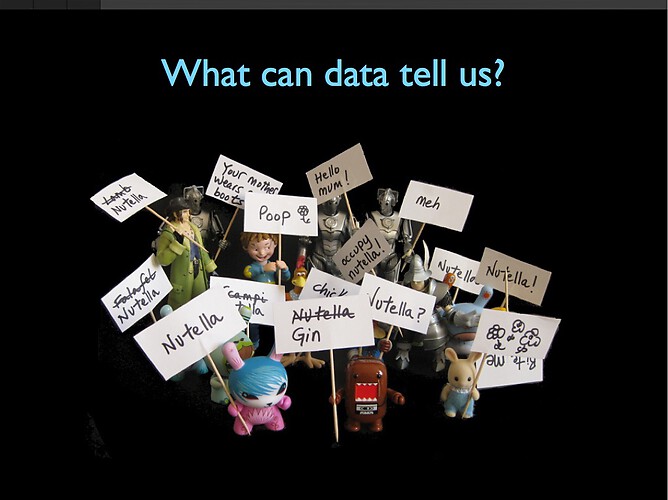
We talk about delight and pain in design. Delight is a pleasant surprise or when something works just right.
Pain is the difference between what your users' need and what they have to go through to get it.
Analytics is often used to measure pain.

I'm going to describe a case study from 19 years ago and something from last year.
The reason I think that something I did 19 years ago is still relevant today is because of what I saw TWO years ago at hotels.com.

The success of hotels.com was divided between four product managers and the merchandising department.
They used multi-variate tests to test their ideas.
A conversion increase of half a percent was considered a win.
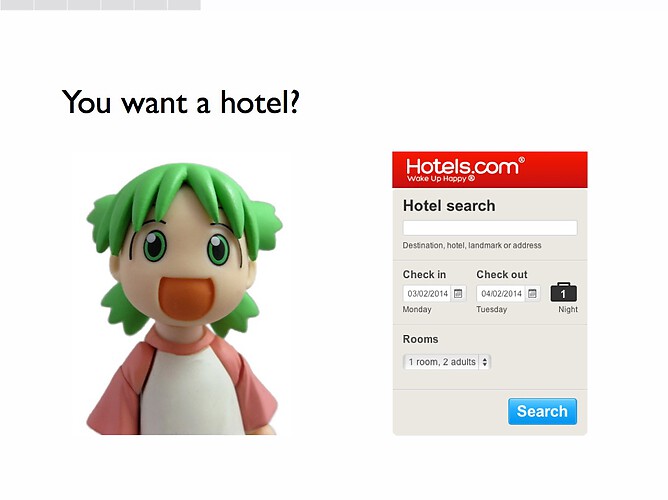
hotels.com is fundamentally a fancy search engine for hotels.
It has a search form, a results list and hotel detail pages.
Landing pages were by country or city and were a variation on the result list.
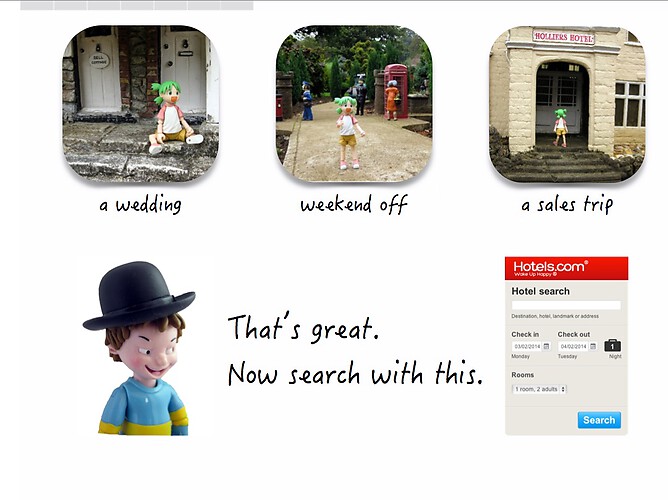
People have different reasons to travel and therefore have different needs.
If I'm going to a wedding, I need to be in staggering distance from the reception and will likely sleep in.
If I'm going on a sales trip, I just need a decent place to sleep because I will be arriving late and leaving first thing.

When I go on holiday, I think in terms of: a) any two weeks this summer, b) anywhere in Europe and c) my budget.
It would be delightful if I could search for hotels that way.
Instead, I have to know exactly WHERE and WHEN I am going before I can find out what is available within my budget.

19 years ago, in 1995, Barclays Bank wanted to put content from all their brochures and leaflets online.
My company, Limitless, worked with Barclays' marketing company to design and build Barclaynet from scratch.
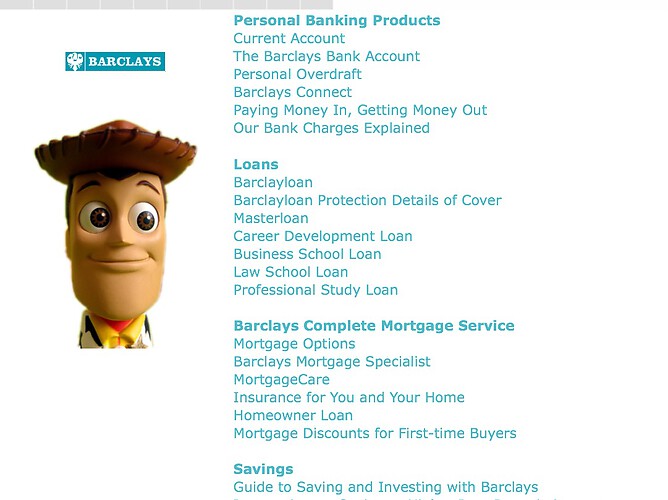
Barclays had 200 leaflets describing products and services for personal and business customers.
Yes, there would be a page listing products grouped by type. But I knew that we needed something more.
I created a content strategy based upon customer needs.

We organised products and services around things that people want and need, things which can change their lives.
For example, "I'd like to buy a car"' "I'd like to start a family" or " I'd like to buy a house."

We made sure that all the products and services were represented under at least one customer need such as,"I'd like to buy a car."
We then wrote content for each customer need. We used these pages to introduce products, services and tools to help people achieve their goals.

MOO is a print company in the UK.
They launched Minicards in 2006: contact info on one side and your own photos on the back.
They're a business-to-business company. However, their brand of bright colours and an informal tone of voice has given them broad appeal.

I've made Minicards for myself, my company and my jewellery shop.
I'd love to work for MOO. So last June I made a pitch in the form of this scrapbook and I sent it to the Chief Product Officer.
As a result, I got an interview.
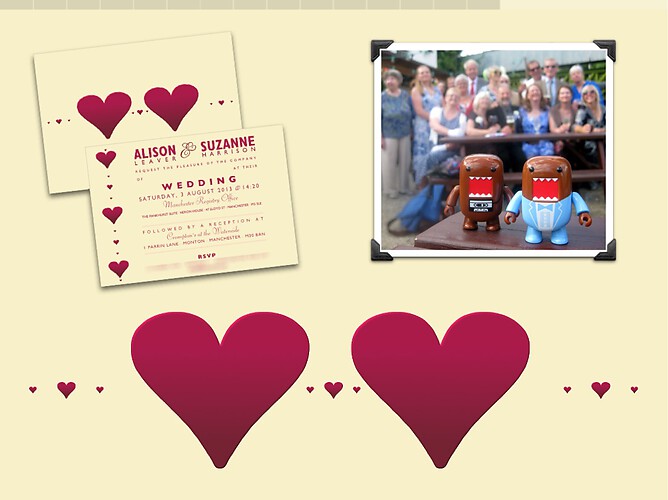
MOO essentially prints things at different sizes personalised with your own images.
I explained that I used their postcard format to make wedding invitations for a friend.
I realised afterwards that she would never have used MOO to make the invitations herself.

My friend had never heard of MOO and she wouldn't have seen a solution to her goal on their web site.
MOO thinks about products: business cards, greeting cards, stickers, labels and postcards.

Whereas people think about what something can DO for THEM.
I told MOO to think about their products in terms of customer needs, such as "You are invited", "Thank you", "Get in touch" and "Remember me".

I mocked-up a grouping of MOO products by customer needs.
Once I had the groupings, I thought about new products that MOO could offer to support these needs.
A calendar, for example, can be used to help customers remember suppliers or can be a way to show off your portfolio.
I abandoned any new product ideas which only appeared in one group.
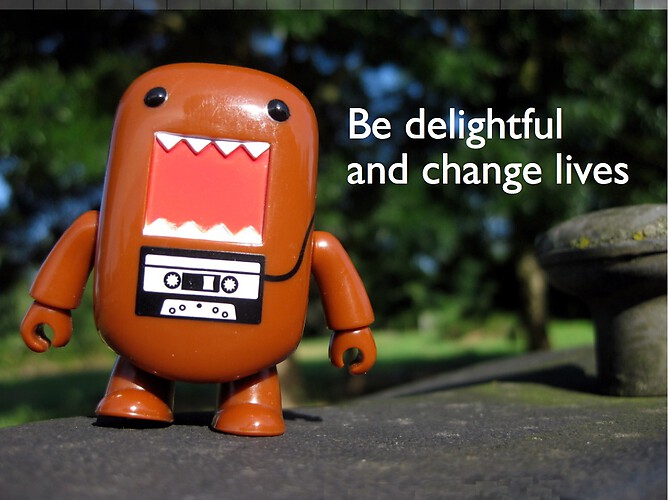
I believe that delight happens when you give your customers and users what they NEED.
I think it's okay to mine our own experiences to come up with new ideas, as long as we use face-to-face research to test them.

We're all designers.
And, as designers, we have the ability to change people's lives.
If you want to delight your users, don't rely on analytics alone to figure out what they need.
Close the gap between "here, choose from what we have" and "what do you need?"
Leave a reply
Your e-mail address will not be published. Required fields are marked*